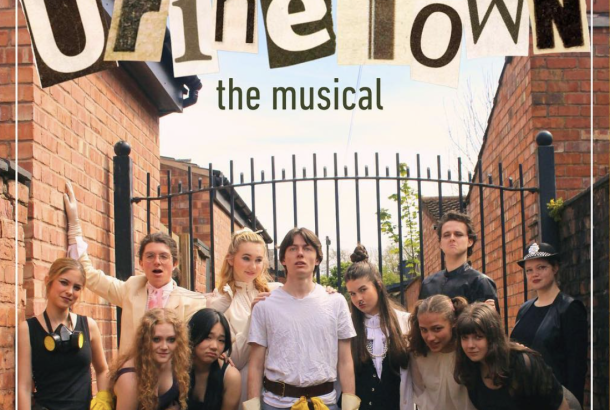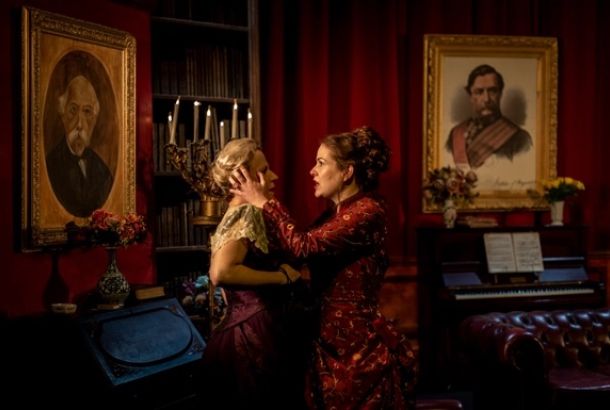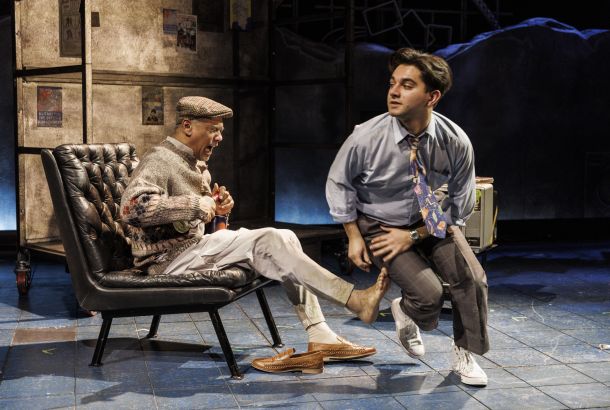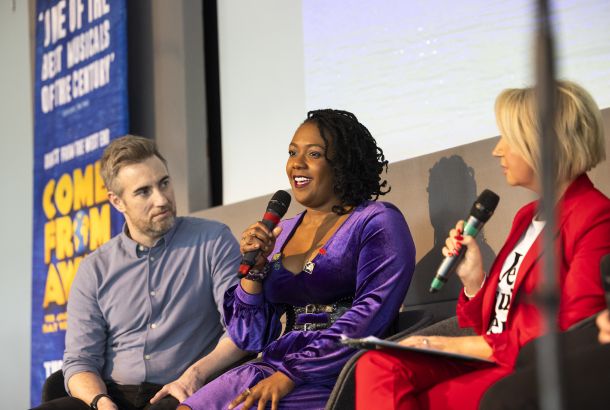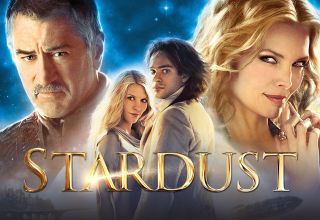Review: monster/monstrum (MIFTA)
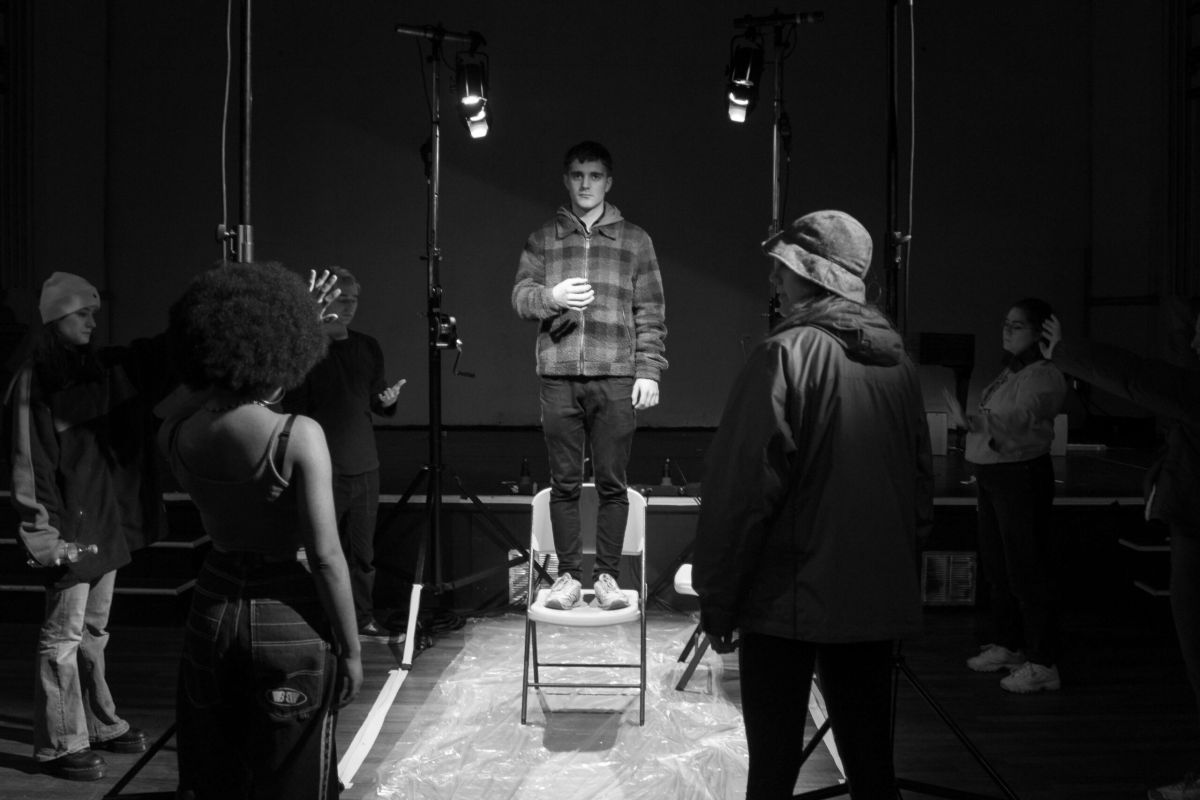
As with most other aspects of our lives, this week, Coronavirus has taken a toll on the world of theatre. The recommendation for self-isolation came ahead of the final show in the Drama Society’s MIFTA season. However, to preserve the hard work of the performers and creative team, one performance still went ahead to NIAMOS Radical Arts Centre, that was live-streamed to the drama community.
The play was monster/monstrum, a devised piece directed by Thomas Valerio and Natalie Hillman, produced by Mae Lankshear and designed by Amy Townsend.
I am a firm believer in recording theatre to make it more accessible; although the ideal situation is to experience the art live, theatre tickets are often expensive. The case with theatre is unlike that of film, where if you miss a new release in cinemas, you can just buy the DVD. This is why I believe theatre should be filmed more frequently. However, it is a shame that of all plays, this was the one that had to cancel its live performances.
The reason for this was the immersive nature of monster/monstrum. It was not so much a play as a performative art piece, drawing on aspects of promenade theatre. Watching the small audience mill about from one performer to another, taking photos and videos, I was reminded more of an art gallery.
Not having attended the live performance as I thought I would, I do not think I can do justice in writing a review of the piece, so this will instead be a reflection on it.
As the camera started recording, we were introduced to a pianist, Rory Greig. He played the same sequence of haunting notes that was initially slightly bothersome but, as our minds became accustomed to the music, it was tuned out and became woven into the fabric of the piece.
Around him crawled six curious creatures, not quite human, not quite animal. They skipped around, balancing their weight on their legs while bent over and using their hands on the floor to steady themselves. There was no dialogue and little sound.
The emphasis on the natural was demonstrated by two prop spaces. In one section of the stage, crushed flowers were laid out and investigated by Adelaide Marshall, sitting solitary amongst them.
Meanwhile, Angelica Fitzmaurice played with pieces of ripe fruit, which were slowly discovered by the other ‘monstrum’, who proceeded to squash them or roll them around.
The most interesting moments came in the interactions the ‘monstrum’ had with each other. They were intimate, crossing uncomfortable boundaries. They leaned in close to each other, sniffed parts of each other’s bodies. They investigated each other, just like they investigated the fruit and flowers. Sometimes they were more intense, aggressively moving towards each other to intimidate one another.
I enjoyed the dynamic performance given by Peter Silver. He climbed on rails and elevated himself by hugging the columns situated around the room.
So, what were these creatures? Long forgotten ancestors of humans? Survivors of an apocalypse? Film lecturer and MIFTA season judge David Butler speculated with me that they were mutated drama students, evidenced by the leotards they wore, who had regressed to primitive versions of humanity while trapped in a theatre.
The costumes were a pleasant surprise because they were so normal. When hearing about the piece, I expected ripped rags or makeup to make the performers resemble animals. Instead, they wore athletic gear that one could easily imagine seeing in a yoga class. This highlighted the performance of the actors, letting them use only their bodies to display their animalistic nature.
Throughout, Greig was the only symbol of humanity as we know it. Playing the piano, he represented art, something these monstrum were not familiar with. As the piece came to a close, Greig stopped playing the piano.
Having had the piano music for over an hour, this was a shock, a gaping absence. The monstrum raised him up onto a chair as if worshipping him as a god, before pouring soil over his head. He was returned to nature and joined them.
There was a poetic irony in the fact that a performance piece about primitive creatures was live-streamed on Facebook, something so modern and associated with civilization. It was wonderful watching the names of members of the drama community pop up on screen, coming together to support their friends from their isolation. We band together in difficult times like these, united by art. Now, the performance of monster/monstrum will remain on Valerio’s Facebook timeline.
It is a shame this had to happen, but in finding a way to still showcase all the hard work by the monster/monstrum cast and creative team, the Drama Society set out a trail of how to continue being creative during this outbreak, which I hope other societies will follow.
